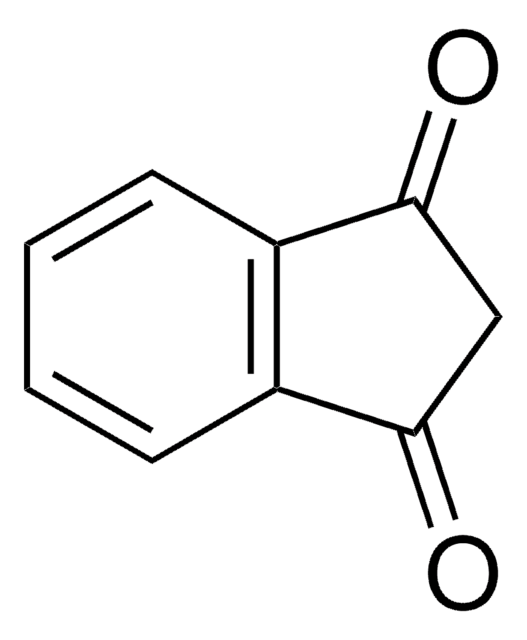423122
4-tert-Butylphthalonitrile

98%
Se connecterpour consulter vos tarifs contractuels et ceux de votre entreprise/organisme
About This Item
Formule linéaire :
(CH3)3CC6H3-1,2-(CN)2
Numéro CAS:
Poids moléculaire :
184.24
Numéro CE :
Numéro MDL:
Code UNSPSC :
12171500
ID de substance PubChem :
Nomenclature NACRES :
NA.47
Produits recommandés
Essai
98%
Forme
powder, crystals or chunks
pb
165-168 °C/6 mmHg (lit.)
Pf
49-51 °C (lit.)
Application(s)
diagnostic assay manufacturing
hematology
histology
Température de stockage
room temp
Chaîne SMILES
CC(C)(C)c1ccc(C#N)c(c1)C#N
InChI
1S/C12H12N2/c1-12(2,3)11-5-4-9(7-13)10(6-11)8-14/h4-6H,1-3H3
Clé InChI
LOTMIRVNJTVTSU-UHFFFAOYSA-N
Code de la classe de stockage
13 - Non Combustible Solids
Classe de danger pour l'eau (WGK)
WGK 3
Point d'éclair (°F)
Not applicable
Point d'éclair (°C)
Not applicable
Équipement de protection individuelle
Eyeshields, Gloves, type N95 (US)
Faites votre choix parmi les versions les plus récentes :
Déjà en possession de ce produit ?
Retrouvez la documentation relative aux produits que vous avez récemment achetés dans la Bibliothèque de documents.
Merve Pamukçu Polat et al.
Dalton transactions (Cambridge, England : 2003), 48(25), 9194-9204 (2019-06-04)
Unsymmetrically substituted phthalocyanines were synthesized by the well-known statistical condensation method using two differently substituted precursors, 4-tert-butylphthalonitrile and 4-(4-pyrrol-1-yl)phenoxyphthalonitrile. Spin-coated thin films of these compounds were subsequently exposed to varying concentrations of methanol, ethanol and butanol between 25 and 150
Gauta Gold Matlou et al.
Spectrochimica acta. Part A, Molecular and biomolecular spectroscopy, 214, 49-57 (2019-02-15)
In this study, a novel asymmetric cinnamic acid zinc phthalocyanine (ZnPc, 1) containing three tert-butyl substituents is reported. The asymmetric ZnPc (1) is further linked to amino functionalized magnetic nanoparticles (AMNPs) (1-AMNPs) and to cysteine functionalized silver nanoparticles (cys-AgNPs) (1-cys-AgNPs)
Min Wang et al.
Nature communications, 10(1), 3602-3602 (2019-08-11)
Molecular catalysts that combine high product selectivity and high current density for CO2 electrochemical reduction to CO or other chemical feedstocks are urgently needed. While earth-abundant metal-based molecular electrocatalysts with high selectivity for CO2 to CO conversion are known, they
Notre équipe de scientifiques dispose d'une expérience dans tous les secteurs de la recherche, notamment en sciences de la vie, science des matériaux, synthèse chimique, chromatographie, analyse et dans de nombreux autres domaines..
Contacter notre Service technique







